Automobile insurance premiums are set based on various factors such as the driver’s age, vehicle type, annual mileage, and purpose of use of the car. Therefore, even if the age is the same, if the vehicle type and annual mileage are different, the premiums will be different for each policyholder.
Since insurance premiums are paid continuously every year, many people would like to reduce their premiums if possible. It is important to understand the points that can reduce premiums, review the insurance contents, and change the contract contents.
Now, we will introduce some tips to save on insurance premiums, so please use this as an opportunity to reconsider your car insurance.
Optional car insurance premiums vary
Auto insurance rates are determined based on a variety of conditions and factors, so premiums can vary greatly depending on the individual and insurance company.
Let’s take a look at what conditions and factors are involved.
If the driver is young, they are considered to have little driving experience and therefore have immature driving skills, so the insurance premiums are set higher. Conversely, the premiums are lower as the driver gets older. There are four main types of coverage:
- Coverage for those aged 21 and over
- Coverage for those aged 26 and over
- Coverage for those aged 36 and over
- All ages coverage
Age classifications vary slightly depending on the insurance company, and some insurance companies provide coverage for people over 30 years old.
If the driver is limited to the policyholder only, the risk of traffic accidents is reduced, so the premiums will be lower. On the other hand, if the driver and spouse are the only insured, the premiums will be slightly higher, and if family members such as children or grandparents have the opportunity to drive, the premiums will be the highest.
Insurance premiums vary greatly depending on the size and performance of the car. Insurance premium determination standards called model-specific interest rate classes are set based on the accident records of each model of car. Based on this standard, “sports cars” that are at higher risk of traffic accidents and “luxury cars” that are more likely to be stolen generally have higher insurance premiums.
The color and grade of your driver’s license reflect your traffic accident and violation history, and your driving history also affects your insurance premiums. If you don’t use your insurance because you have no accidents, your grade will go up and your insurance discount rate will also increase.
The more frequently you use your car, the higher the risk of a traffic accident, and therefore the higher your insurance premiums will be. The most expensive insurance premiums are for business use, followed by commuting to work or school, and the cheapest for daily use or leisure.
If you drive a long distance per year, you will also use your car for a long time and frequently, which increases the risk of traffic accidents and therefore increases your insurance premiums. Conversely, if you drive a short distance, your insurance premiums will be lower.
How to lower car insurance premiums?
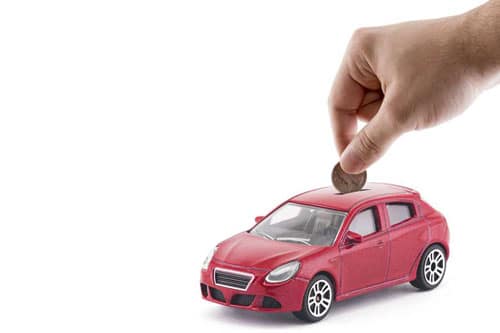
As long as you continue to use your car, you never know when you might get into a traffic accident. Therefore, as long as you own and use a car, you will need to continue to have car insurance to prepare for the worst case scenario.
If you are going to be paying insurance premiums for many years, you probably want to keep them as low as possible. Insurance premiums vary depending on various conditions and factors.
In order to reduce your insurance premiums, it is important to review each of the conditions and coverages. Also, there may be some coverages that were fine when you first signed the contract, but that you no longer need as time goes by.
If your lifestyle or family structure changes and you no longer need certain items, you may be able to find more advantageous conditions or compensation.
How to reduce car insurance premiums: 1. How to sign a contract
Depending on the method of contracting, automobile insurance can be divided into “agency-type insurance” and “online shopping-type insurance.”
This method involves visiting an insurance agency, receiving a face-to-face explanation of the insurance contents from a staff member, and signing a contract. This has the advantage of being reassuring as you can consult with them about which insurance and compensation to choose, and the procedure is easy and smooth.
You can apply online or over the phone, and then complete the contract procedure by mail, etc. You have to research and choose an insurance company yourself, but the appeal is that you can do the procedure easily at any time.
Looking at the premiums alone, agency-based insurance is somewhat more expensive because it incurs labor costs and storefront fees, which are added to the premiums. On the other hand, online-based insurance has the advantage that there are no fees because the procedures can be completed online.
How to reduce car insurance premiums ② Driver restrictions

When taking out car insurance, you can limit the scope of drivers of the insured vehicle.
By limiting the driver to the policyholder, the risk of a traffic accident will be reduced, making the insurance premium cheaper. If only the policyholder drives, limit the policy to the policyholder. In that case, when going out with your family, be careful not to let anyone other than the policyholder drive.
If your spouse absolutely needs to drive, you can take out one-day car insurance, and there will be no problem even if it is limited to yourself.
However, if your child gets a driver’s license and will be sharing your car, it’s safer to keep it restricted to family use just in case.
How to reduce your car insurance premiums 3. Types of vehicle insurance
You can also reduce your insurance premiums by limiting your vehicle insurance coverage to the bare minimum.
In the first place, you can freely choose whether or not to add vehicle insurance. For example, if your car is many years old, you can choose not to repair minor scratches and wait until you can buy a new car.
Also, some people may consider buying a new car if their car is destroyed. In this case, vehicle insurance is not necessary, so you don’t need to buy it!
However, some people prefer to drive new cars even if it means having to repair them in the event of an accident, so in that case it is safer to have the system installed.
The premiums for vehicle insurance vary depending on the scope of coverage. There are limited types that only cover damage caused by traffic accidents, as well as wide types that cover damage caused by theft and natural disasters such as typhoons and earthquakes.
If we break it down even more, the coverage varies depending on the insurance company, including types of traffic accidents excluding hit-and-run and single-vehicle accidents.
The best way to save money is to not purchase vehicle insurance, but you can also reduce your premiums by carefully selecting the minimum coverage required.
How to reduce your car insurance premiums #4: Vehicle insurance deductible
In addition to the coverage of your vehicle insurance, your deductible is also a key factor in keeping your premiums down.
For example, if a covered accident costs 300,000 yen to repair, and your deductible is set at 50,000 yen, you will receive 250,000 yen in insurance payments and will have to pay the remaining 50,000 yen out of pocket.
By increasing this deductible, you can reduce your insurance premiums.
Let’s take an example from an insurance company.
The insurance premiums will be the highest.
The deductible for the first accident is 50,000 yen, and for the second accident it is 100,000 yen.
The deductible for both the first and second accidents is 100,000 yen.
This option offers the lowest insurance premiums, but the deductible for both the first and second accidents is 150,000 yen.
If the deductible is too high, the amount you have to pay in the event of an accident will increase, so it is recommended that you set it at a small amount rather than zero.
How to reduce your car insurance premiums: 5. Minimize passenger compensation
There are two main types of car insurance that cover damages to passengers in a car: “Personal Injury Insurance” and “Passenger Injury Insurance.”
Personal injury insurance and passenger injury insurance have different systems for the timing and amount of insurance payments.
If a passenger is injured in an accident, personal injury insurance will compensate the actual cost of medical treatment, etc. Furthermore, if the total amount of damages is determined, the insurance money will be paid even before a settlement is reached.
On the other hand, passenger injury insurance determines the amount of insurance coverage according to the part of the body injured and the symptoms. Insurance benefits are paid when the total number of days of hospitalization or outpatient treatment based on a doctor’s diagnosis exceeds five days.
If you have some savings and are not in a hurry to pay for medical expenses, you can rest assured by purchasing personal injury insurance that will cover the actual expenses. On the other hand, if you want to use the insurance money for medical expenses as soon as possible, you can also choose to purchase passenger injury insurance.
In any case, if you purchase both personal injury insurance and passenger insurance, the coverage will overlap, which will increase your insurance premium burden.
Carefully researching the coverage and choosing insurance that covers what you need can help you save on insurance premiums.
How to reduce car insurance premiums ⑥ Pay attention to the purpose of use

Keep in mind that insurance premiums will vary depending on how you use your car.
If the purpose of use is commuting to work or school, the premiums will be slightly higher. On the other hand, if the purpose of use is daily use or leisure, the premiums will be slightly lower.
If you use your car for commuting to work or school on average 15 days or more per month per year, it will be considered for commuting to work or school purposes.
If you usually commute by train and only drive when the weather is bad, such as when it’s raining or snowing, then your commute is infrequent and falls into the category of daily/leisure purposes.
Also, if your lifestyle has changed, such as you used to drive to work but now commute by train, or you quit your job and no longer commute to work, please ask your insurance company to change the purpose of use. Your insurance premium may go down, so we recommend you review your policy!
How to reduce your car insurance premiums ⑦ Use discount systems
Different insurance companies offer different discount systems, but let’s start by looking at the long-term premium discount.
Regarding grades, the maximum grade is usually 20, but some insurance companies have up to 22. The higher the grade, the larger the discount rate, so the lower the insurance premium.
One of the benefits is that even if you use your insurance in the event of an accident, your grade will not decrease more gradually, so your insurance premiums are unlikely to increase.
Plus, there are other discounts:
- “Internet discount” – lower your insurance premiums if you complete your insurance contract online
- If you drive less than the set annual mileage in a year, you can have the amount of your insurance premiums carried over to the following year deducted from the amount you did not drive.
- “New car discount” – if the insurance start date is within 49 months of the new car registration, the premium will be discounted
- “Automatic brake discount” for cars equipped with safety devices such as automatic brakes
How to reduce your car insurance premiums: 8. Cancel unnecessary clauses

In addition to the basic coverage, special clauses can be added to car insurance. Contractors are free to decide whether or not to add them.
There are several types of optional clauses that are meant to provide more comprehensive coverage. For example, there are the following four:
- “Attorney Fee Special Clause” covers the costs of consulting with an attorney and having them take action in cases such as traffic accident compensation settlements and lawsuits.
- “Family Bike Special Clause” that covers damages in the event of an accident while driving a moped
- Automobile insurance is generally a one-year contract, but there is an “automatic renewal special clause” that will automatically renew your policy even if you forget to renew your policy.
- “Personal Liability Special Clause” covers compensation for injuries or death of others or damage to other people’s property in daily life
If you add all the special clauses, you will have peace of mind in the event of an emergency, but if you add too many, the insurance premium will be higher. Therefore, you can reduce your insurance premium by reviewing the special clauses and considering whether they are necessary for your life and removing the ones you do not need.
How to reduce your car insurance premiums #9 Pay your premiums annually
The cost of insurance will vary depending on the payment method and frequency of payment.
Generally, car insurance is a one-year contract, and you can pay the full amount in advance once a year (annual payment method). On the other hand, you can also split the yearly premium into 12 months and pay each month.
However, the total amount of insurance premiums will be higher if you pay monthly than if you pay annually! Therefore, you will need a large amount of money at the beginning, but we recommend paying annually because it will keep your premiums lower and you only have to pay once a year.
There are also several ways to pay your insurance premiums, including direct debit, credit card payment, convenience store payment, and bank transfer.
If you choose a payment method such as bank transfer, you may have to pay a fee. In that case, you may end up losing money by paying the fee just for the insurance premium.
On the other hand, paying by credit card also has the advantage of giving you points that can be used for shopping, etc.
It’s time to reconsider your payment methods and switch to more cost-effective methods.
Compare insurance companies

There are many insurance companies for car insurance, and each company has different coverage, discount services, and premiums. In order to receive generous coverage at the lowest possible premium, we recommend that you research the coverage details of the insurance company in detail.
When doing so, choose an insurance company that matches your current lifestyle. Look online for insurance companies with low premiums and compare the coverage.
You should also take advantage of discounts whenever possible and carefully examine the contents of your insurance to make it cheaper and give you peace of mind in the event of an accident. It is also important not to leave your insurance as it is, but to review your insurance from time to time!
If you own more than one car, you can use the second car discount.
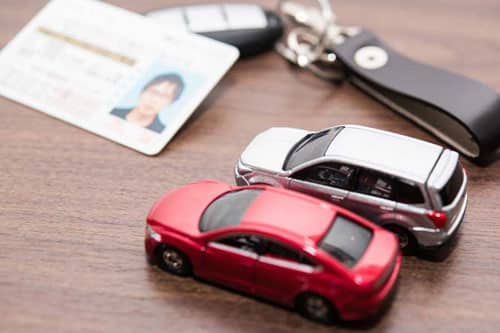
If your family owns one car and you purchase a second car and take out car insurance, you may be eligible for a “second car discount.”
For example, if a child gets a driver’s license after graduating from high school, buys a car, and applies for new car insurance, the premiums will be high because the child is young and has little driving experience. However, if the child’s driving grade has increased by even one grade at the time the insurance starts, the premiums will be lower.
There are several conditions that must be met in order for the second car discount to apply:
- The first vehicle is rated 11 or above and is a privately owned vehicle of 8 models.
- The second car is a new member, and there are eight types of personal vehicles.
You need to check as all the conditions must be met.
Since insurance companies do not provide any information about second car discounts, you will have to apply for them yourself to have the discount applied.
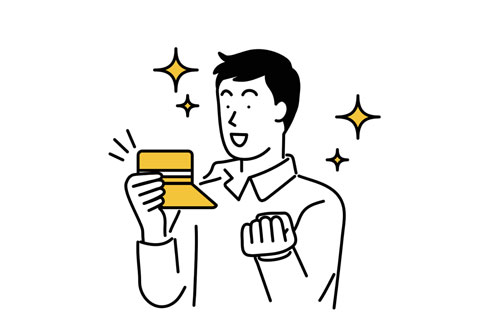
If a family purchases a new second car, they can switch the insurance rates for the first and second cars when taking out car insurance.
In order to transfer the grade of your first car to your second car, there are conditions, such as having relatives living in the same household, so be sure to check.
For example, let’s say a parent owns a car, has had no accidents for many years, and has a high insurance grade. When a child next purchases a car and applies for car insurance, even with the second car discount, they will start at grade 7. If the parent’s grade is high, switching will save a lot on the child’s insurance premium.
For your parent’s generation, the insurance premium will not be that high even if you reach grade 7. You can only change grades when joining a new policy, and once the insurance period for your second vehicle has started, you can’t do so, so don’t miss the opportunity.
Even if the second car discount is not applied, it may be possible to change your grade, so if you take advantage of this, your insurance premiums may be slightly cheaper.
Be careful, as there may be overlapping coverage between the first and second car insurance, especially if the policyholders are related.
The most common types of insurance are “Personal Injury Insurance” and “Passenger Injury Insurance,” which cover damages to passengers in a car. These two types of insurance cover “the driver and his/her spouse,” “relatives living with the driver or spouse,” and “unmarried children living separately.”
Therefore, if a parent has personal injury insurance on their first car insurance, when their child takes out car insurance for a second car, the compensation for personal injury insurance will overlap, so they will not need to take out personal injury insurance on the second car insurance, and the premiums will be cheaper.
You can also save money on your car insurance by checking the coverage of your car insurance to avoid paying duplicate premiums unnecessarily.
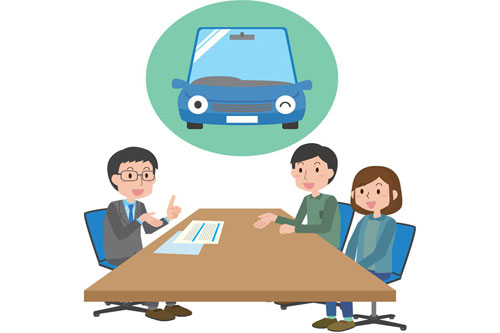
The second car discount applies whether the first and second cars have different insurance companies or the same, as long as certain conditions are met, such as the first car’s class.
However, you may be able to get a discount on your insurance premiums if you insure your second vehicle with the same insurance company as your first vehicle. Having one insurance company is convenient in that you also have the same contact information.
If you renew your contracts at the same time, the process will be easier. If you use one company, it will be easier to apply for a second contract, so it’s a great deal.
If you don’t drive your car often, for example, just a few times a month and only drive it around town, then if you take out car insurance that assumes you drive your car on a daily basis, the premiums will seem high for how often you use your car.
You want to take out car insurance just in case, but it would be a waste of money. In that case, there is car insurance that you can take out for just one day, so you can take out the insurance as needed and avoid waste.
1DAY Insurance, which can be purchased for just a few hundred yen a day, can be easily applied for at a convenience store. It is a convenient insurance that can be used when you don’t own a car and you borrow a friend’s or acquaintance’s car to drive.
By taking out car insurance only when you need it and for the period you need it, you can kill two birds with one stone by not only having peace of mind in the unlikely event of a traffic accident, but also keeping your insurance premiums low.
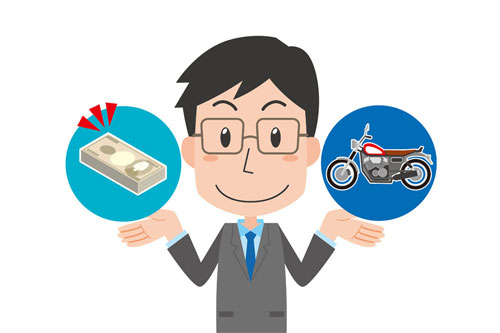
If a family member owns a moped and uses it for commuting to work, etc., they will need to take out insurance in case of a traffic accident.
Normally it would be thought that it would be a good idea to take out motorcycle insurance, but if your family owns a car, it is said to be more cost-effective to add a “family motorcycle special clause” to your car insurance.
The scope of coverage includes the driver, spouse, and family members living with either driver. If parents add a special clause to their car insurance, they can rest assured that their child will be covered in the event of an accident while driving a moped.
Just as people who own and use a car have auto insurance, many people also have life insurance to protect against illness, injury, etc. You may think that life insurance has nothing to do with car insurance, but that’s not necessarily the case.
For example, if a family member is injured in a traffic accident, depending on the type of life insurance, medical expenses may be covered. Also, if the insurance company provides a sufficient death benefit in the unfortunate event of death, your family may not be left in financial difficulty.
In that case, you may not need to pay as much for personal injury insurance or passenger injury insurance in your car insurance. You should also review the coverage of your life insurance and make sure that it does not overlap with the coverage of your car insurance.
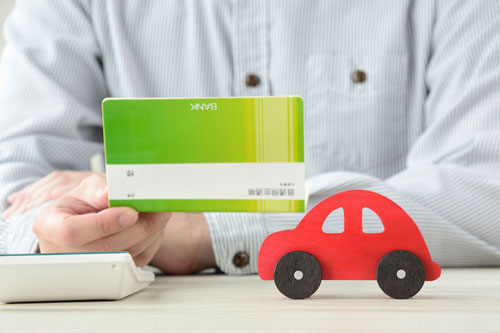
Automobile insurance premiums are determined based on various conditions such as the driver’s age, range, mileage, driving history, etc. It is possible to reduce insurance premiums with some ingenuity, so it is important to carefully review your premiums while keeping in mind the key points.
If you review your policy carefully, you should be able to see if there is any duplication of coverage or if there are any unnecessary special clauses attached. Especially when the renewal date approaches, you will receive postcards from the insurance company notifying you of the renewal, so it is a good chance to review your policy.
It is often the case that the premiums can be reduced by reviewing your insurance. If a long time has passed since you signed a new contract, it may be better to change the contents of your insurance due to changes in your lifestyle.
Buying a second car is also a good opportunity to reassess your options. Furthermore, if you are buying a new car, you may be able to take advantage of new discounts, such as discounts for new safety features.
It may be a bit of a hassle, but even if it’s a small amount, if you keep paying it over a long period of time, it can add up to a considerable amount, so it’s worth reconsidering.




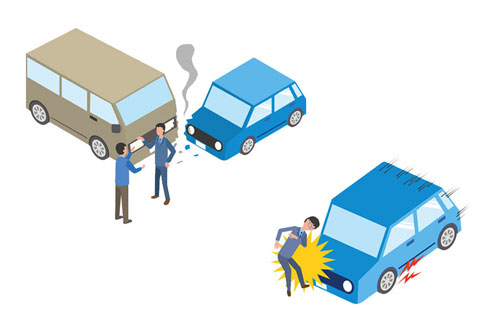





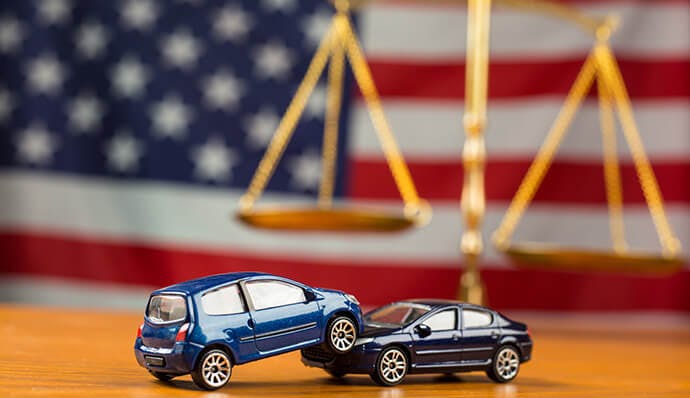
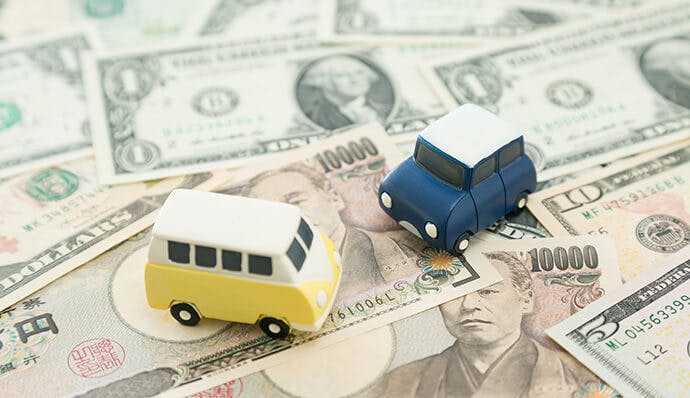
![[Working in the US] Anti-Money Laundering in the Insurance Industry](https://mortalgaming.online/wp-content/uploads/2025/05/h_good_practices_prevent_money_laundering.webp)


